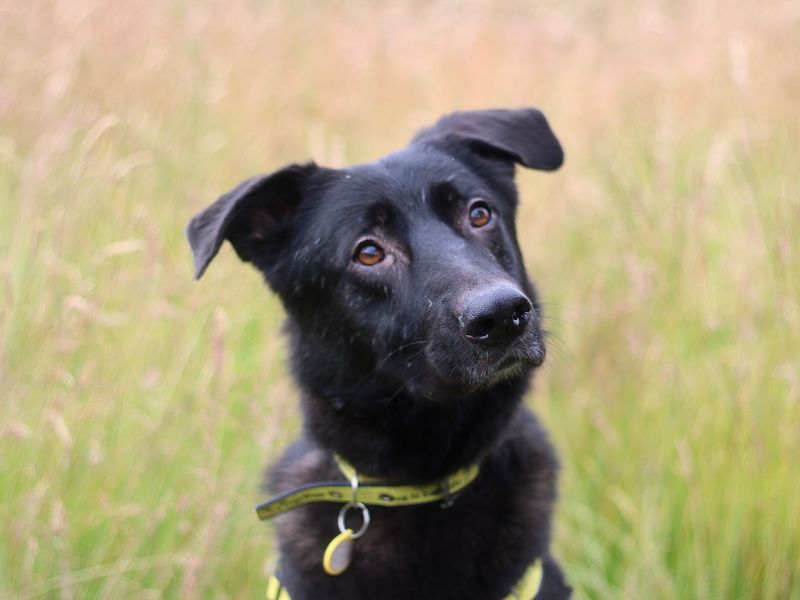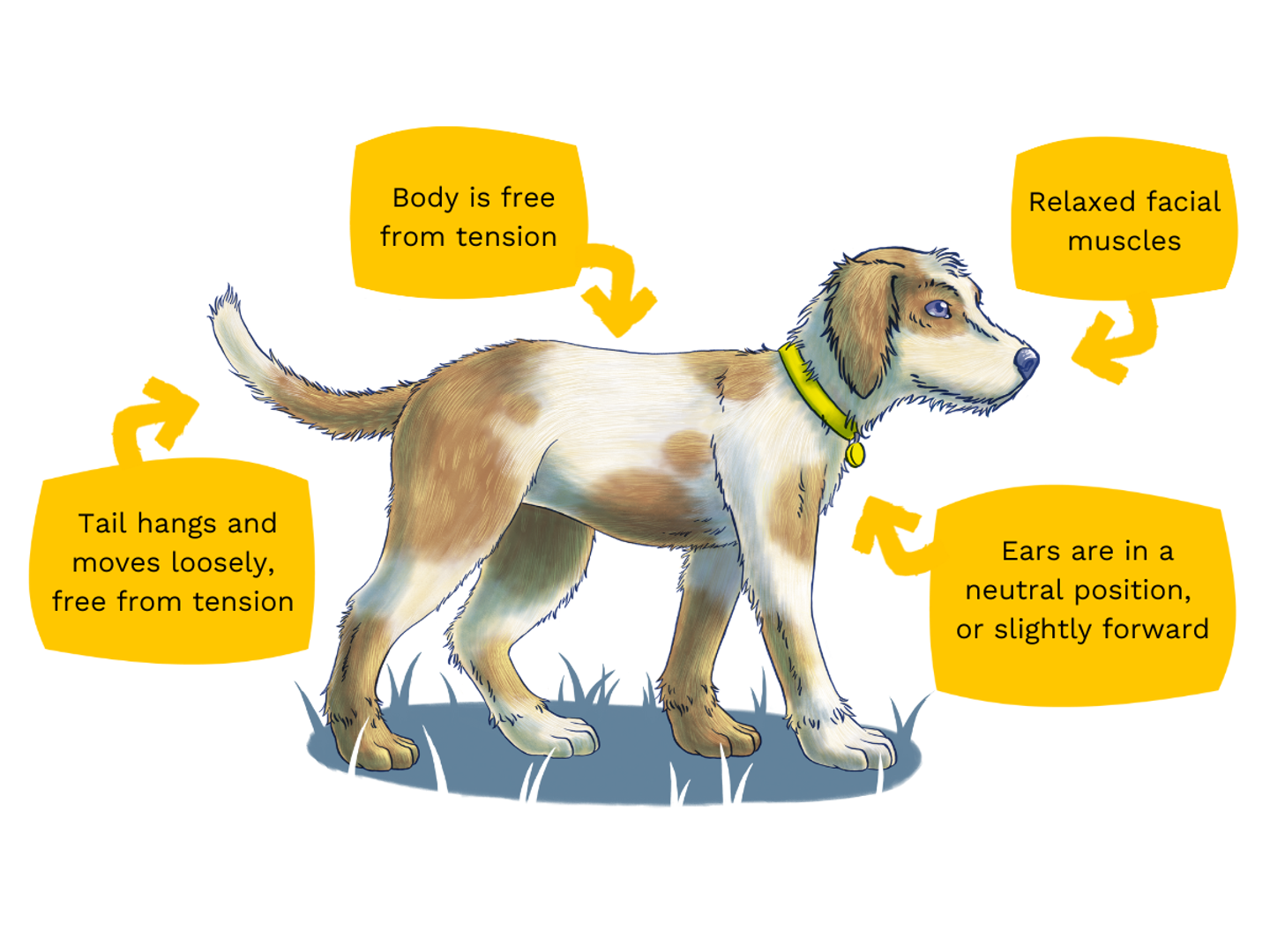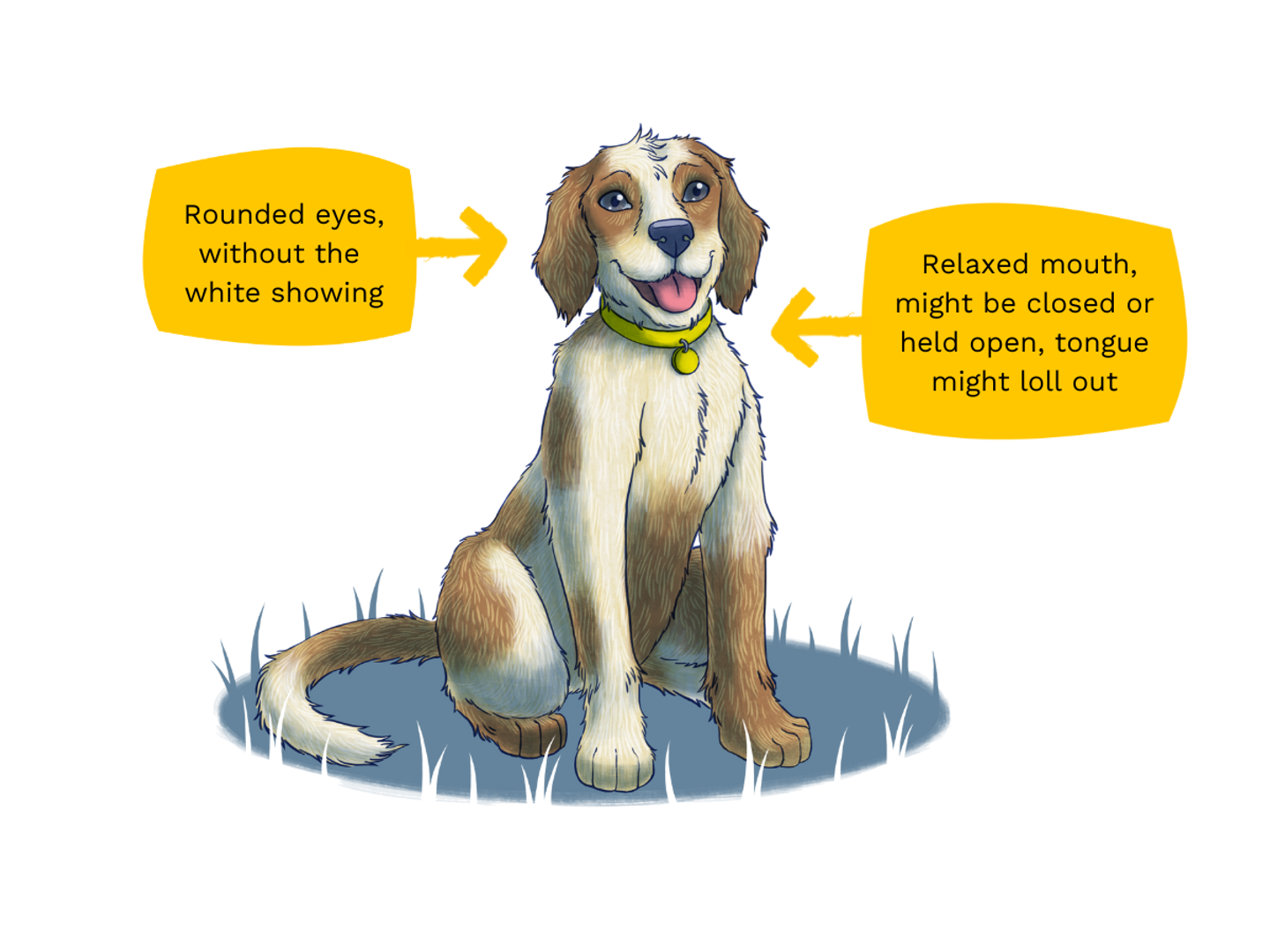How to understand your dog's body language
Take our quiz and learn how to read your dog's body language and understand how they're feeling.

Dogs use their whole bodies to show each other, and us, how they’re feeling. It’s really useful to learn how your dog communicates so you can recognise when they’re feeling confident and relaxed, or if they're worried or frightened.
Recognising signs a dog is stressed will help you to avoid situations that they might find challenging, and keep you, your dog, and others safe.
Dogs tend to repeat behaviour that works well for them, so responding to your dog’s behaviour and subtle body language is really important.
For example, if a dog tries turning their head and blinking to say that they’re unsure and need space, and you understand and help them, then they’re more likely to do this next time.
But if these subtle signals are missed, a dog may use more obvious signs, like lunging and growling. If that works to get them out of the situation, then they are likely to repeat these behaviours next time.
Take our dog behaviour quiz
Test your knowledge of dog behaviour and body language with our quick quiz. Can you tell when your dog is relaxed and happy?
Reading your dog's body language
When looking at body language, and working out what your dog is saying, you need to consider three things:
1. The individual dog
Dogs come in many shapes, sizes and breeds, and these differences will likely affect the way that they communicate, so you need to consider the individual dog. Here are some examples:
- If a dog has a very dark or very long coat then it might be harder to spot small movements in their face or body compared to dogs with shorter, paler fur.
- Some dogs have very wrinkled skin, so they might not be able to move their faces and bodies in the same way as others.
- Some dogs might have tightly curled tails, or no tail at all, so they can’t move them to show their feelings.
- Some dogs have long, floppy ears, so ear movements won’t be as obvious as they are for dogs with ears that sit up high on their head.
You know your dog best, so you can be the expert in reading their subtle body language.
2. The whole body
Look at a dog’s whole body, from their head to their tail. Take everything into account and gather as much information as possible before trying to interpret how they are feeling.
3. The context of their behaviour
Behaviours can have different meanings depending on the situation. For example, a dog might drool and lick their lips as their dinner is being prepared. This is a normal bodily response to expecting food.
But if a dog shows that same response in a different context, such as when being lifted into the car, this could show that they are worried about the car journey.
Signs that a dog is relaxed
Dogs that are calm, confident and relaxed should be interested in what's happening around them and responsive to their owners, but also able to settle.


Signs your dog could be anxious
When a dog is worried about something or uncomfortable about a situation, they may behave in ways that communicate to us, or other dogs, that they need more space between themselves and whatever it is they’re unsure about.
You need to know your dog well enough to recognise the signs that they are uncomfortable or worried. You can then take appropriate action to protect the welfare of your dog, and to prevent the situation from getting worse.
For a detailed list of signs to watch out for, read our guide to signs of anxiety in dogs.
If you’re concerned about your dog’s behaviour, then speak to your vet to rule out any medical problems that may be influencing their behaviour and ask about a referral to an accredited behaviourist.
Related articles



